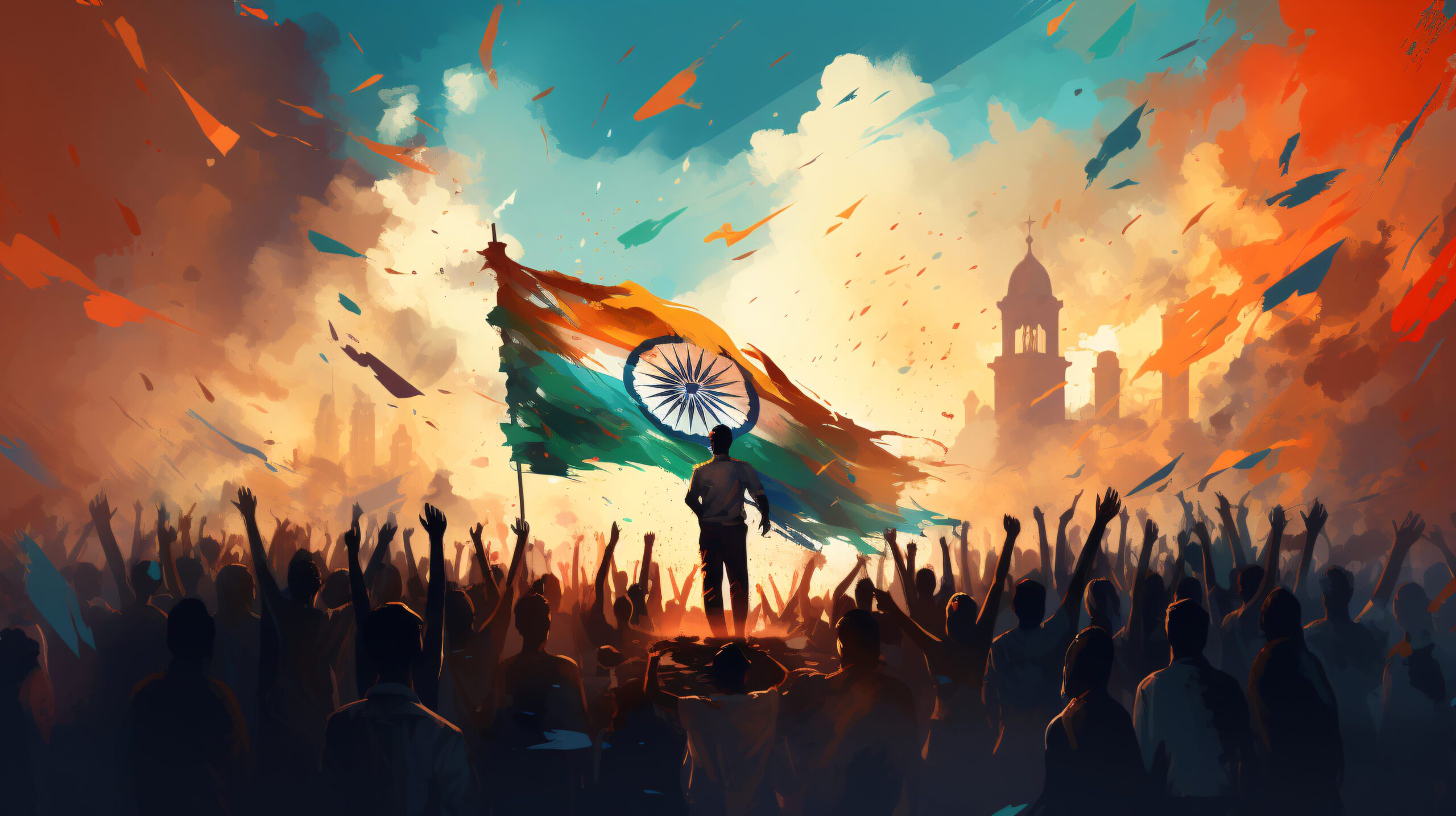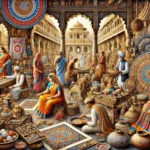India’s journey after gaining independence on August 15, 1947, has been one of remarkable transformation and development across political, economic, social, and cultural spheres. Here is an overview of India’s post-independence history:
1. Political Developments
- Formation of the Constitution (1950): India adopted its Constitution on January 26, 1950, which established the country as a sovereign, democratic republic. Dr. B.R. Ambedkar played a pivotal role as the Chairman of the Drafting Committee.
- Integration of Princely States: One of the early challenges was integrating over 500 princely states into the Indian Union. Sardar Vallabhbhai Patel, as the first Deputy Prime Minister and Home Minister, successfully oversaw this process.
- Democracy and Elections: India conducted its first general elections in 1951-52, establishing itself as the world’s largest democracy. Since then, regular elections have been held at the national and state levels, ensuring a stable democratic process.
2. Economic Development
- Planned Economy and Five-Year Plans: India adopted a socialist-inspired mixed economy, with the Planning Commission overseeing the development process through Five-Year Plans. The first plan focused on agriculture, while subsequent plans emphasized industrialization and infrastructure.
- Green Revolution (1960s-1970s): To tackle food shortages, India introduced the Green Revolution, which led to increased agricultural productivity, particularly in wheat and rice, making the country self-sufficient in food grains.
- Economic Liberalization (1991): Faced with a severe economic crisis, India embarked on economic liberalization in 1991. This shift towards a market-oriented economy led to rapid growth, increased foreign investment, and the emergence of a robust private sector.
3. Social Progress
- Education: India has made significant strides in education, with increased literacy rates and the establishment of premier institutions like the Indian Institutes of Technology (IITs) and Indian Institutes of Management (IIMs). However, challenges in universal access to quality education remain.
- Healthcare: Improvements in healthcare have led to higher life expectancy and lower infant mortality rates. However, disparities in access to healthcare services between urban and rural areas continue to be a challenge.
- Social Reforms: The Indian government has implemented various social reforms aimed at promoting equality, such as the abolition of untouchability, affirmative action for marginalized communities, and welfare schemes for the poor.
4. Foreign Policy and Defense
- Non-Alignment Movement (NAM): Under the leadership of Prime Minister Jawaharlal Nehru, India was a founding member of the Non-Alignment Movement, advocating for neutrality during the Cold War.
- Wars and Conflicts: India has engaged in several wars and conflicts, including with Pakistan (1947-48, 1965, 1971, and 1999) and China (1962). The Kashmir conflict with Pakistan remains a long-standing issue.
- Nuclear Power: India conducted its first nuclear test in 1974 and declared itself a nuclear weapons state in 1998, significantly influencing its strategic and defense posture.
- Angkor Wat – The Largest Hindu-Buddhist Temple in the World
- UNESCO World Heritage Sites
- Indian Handicrafts: A Diverse Cultural Heritage
5. Technological and Industrial Progress
- Space Exploration: The Indian Space Research Organisation (ISRO) has made significant achievements, including the successful launch of the Mars Orbiter Mission (Mangalyaan) and the Chandrayaan missions to the Moon, establishing India as a major space power.
- Information Technology: Since the 1990s, India has emerged as a global leader in information technology, with its IT industry contributing significantly to the economy and making India a hub for software services and technology innovation.
6. Cultural and Social Identity
- Diversity: India has maintained its rich cultural diversity, with multiple languages, religions, and traditions coexisting. The country’s cultural heritage, including festivals, art, and cinema, continues to thrive.
- Cinema: Bollywood, India’s Hindi-language film industry, has become a global phenomenon, influencing popular culture not just in India but across the world.
7. Challenges and Issues
- Poverty and Inequality: Despite economic growth, poverty, unemployment, and inequality remain significant challenges. The government has implemented various schemes to address these issues, but progress has been uneven.
- Corruption: Corruption has been a persistent problem in Indian politics and governance, leading to public dissatisfaction and calls for greater transparency and accountability.
- Environmental Concerns: Rapid industrialization and urbanization have led to environmental degradation, pollution, and challenges related to climate change. India is also vulnerable to natural disasters like floods and cyclones.
8. Recent Developments
- Digital India: Launched in 2015, the Digital India initiative aims to transform India into a digitally empowered society and knowledge economy, with a focus on increasing internet access, e-governance, and digital literacy.
- Economic Reforms: The introduction of the Goods and Services Tax (GST) in 2017, along with other economic reforms, has sought to streamline the economy and boost growth.
- Global Influence: India is increasingly asserting its influence on the global stage, participating in international forums like the G20, BRICS, and the United Nations. India’s foreign policy has become more assertive, with a focus on strengthening ties with major powers and neighboring countries.
India’s journey since independence has been a story of resilience, growth, and transformation. Despite numerous challenges, the country has made significant progress and continues to play an increasingly important role in global affairs.



